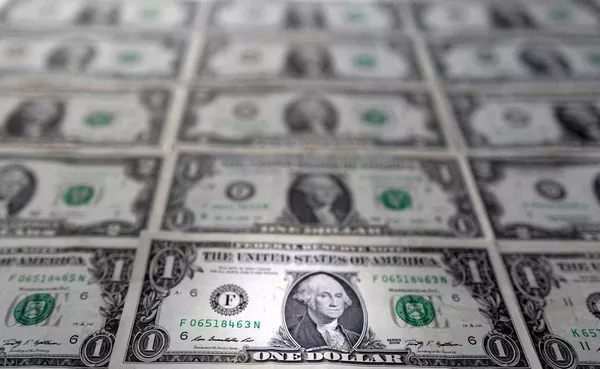In the early hours of Tuesday’s trading, the demand for the dollar faced challenges as markets eagerly anticipated the release of the U.S. Consumer Price Index (CPI) for November. The U.S. dollar index, after a slight increase on Monday, remained in negative territory below 104.00. Concurrently, the European economic agenda included the ZEW business sentiment surveys for both Germany and the euro zone.
The latest 10-year U.S. Treasury note auction on Monday witnessed a notable drop in the high yield, registering at 4.29%, down from the previous auction’s 4.51%. This development contributed to a decline in the U.S. dollar index, keeping it in the red against major rivals. The U.S. 10-year Treasury yield experienced a nearly 1% decrease to around 4.2% in early Tuesday trading, resulting in relatively unchanged U.S. stock futures. Investor caution prevailed following a report from U.S. Central Command detailing an attack on a merchant ship in the Red Sea by Houthi rebels using a land-based missile.
Anticipation looms over the U.S. inflation data, with the annual rate, measured by changes in the Consumer Price Index (CPI), expected to decrease from 3.2% in October to 3.1% in November. The Core CPI, which excludes volatile food and energy prices, is anticipated to rise by 4% year over year, aligning with its previous gain.
Earlier data from Australia revealed a decline in the National Australia Bank’s business confidence index to -9 in November from -2% in September. Reserve Bank of Australia (RBA) Governor Michele Bullock emphasized a cautious approach to monetary policy and reiterated the commitment to monitor new data. The AUD/USD gained traction, testing 0.6600 and rising 0.5% on the day during the Asian session.
The Office for National Statistics reported that employment change in the UK was +50,000 in October. Despite the ILO unemployment rate holding steady at 4.2% in the three months to October, wage inflation, measured by changes in average earnings including bonuses, saw a sharp decline to an annual rate of 7.2% from the previous 8%. GBP/USD, consequently, dipped towards 1.2550 but managed to stay above this level.
EUR/USD concluded the first trading day of the week with marginal changes, starting the day heading towards 1.0800 on Tuesday.
USD/JPY experienced early Tuesday losses amid renewed weakness in the U.S. dollar and risk-off market conditions. At the time of reporting, the pair was down more than 0.5% on the day, trading below 145.50.
Gold, after falling below $1,980 for the first time in nearly three weeks, reversed losses on Monday. A pullback in U.S. yields provided support, with GOLD/USD trading as high as $1,990.


